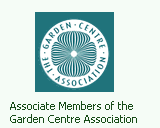Snap frame - How it works
Snap frames are easy to use. Open up the four sides of the frame - they click open by hand - to see the holes provided for screwing to the wall. Fixings are supplied with every snap frame. If you are not sure how to fix to a wall seek help from a person with the necessary skills.
The poster protector is shipped inside the frame. Because it is clear plastic it is easy to miss it, but look for the finger-lift indentation half way down one side. Pop your poster or print into the frame behind the poster protector. Remember only to use paper or thin card - thick card or board will stop the frame from closing correctly and unsightly gaps will be visible at the corners.
The aluminium edge profiles are spring loaded. They come safely to rest in either the fully open or fully closed positions. No special skill is needed to change posters.
Frame with poster slot - How it works
Several of our frames feature an open slot in one edge of the frame where the poster is inserted, usually in one of the short sides. If the frame is used portrait (upright) the slot is at the top, as pictured.
If the frame is used landscape the print is slotted in from the side. You can order a small clear plastic poster retention clip which attaches over the opening to stop the poster wriggling out sideways.
Clips for fastening, hanging or supporting the frames also need to be ordered separately. This is because there are different ways to fix these types of frame - wall fasteners, hanging clips, feet etc.
Slim Frames and Woodline Frames are supplied with a backing sheet (included in the price). This is a sheet of semi-rigid fluted plastic which supports paper prints and holds the print 'forward' in the frame so it is well presented. Most suppliers do not include these backing sheets but we consider them important.
Poster Protectors are optional accessories. They are thin clear plastic sheets made from anti-glare material - to cut down on distracting reflections. They are not required if you are planning to use laminated paper prints in Slim frames.
Poster case/noticeboard - How it works

The lockable poster case has a hinged door. However unlike a notice board, which is intended for displaying several sheets of paper or notices, the poster case is intended for displaying a single poster. The poster case and poster size should be synchronised - i.e. an A2 poster case is intended for an A2 poster.
In this way the edge of the poster - or menu, notice or whatever - can be retained correctly by the plastic Poster Clips positioned around the perimeter of the poster case. The back panel is not intended to accept pins and there is no space for pin heads behind the front glazing.
In contrast, notice boards are designed to create a gap, thus leaving space for pin heads or magnetic fixing buttons, depending on the style of noticeboard (cork-back or magnetic dry-wipe). With a noticeboard there is no problem in displaying several sheets of paper simultaneously.
Wall fixings are provided. In the case of the Poster Case and Series 30 Notice Board the unit is screwed through the aluminium frame surround: fixing holes are only visible when the door is open. The product is designed so that if any rain water does seep in around the fixing holes it can drain out from the bottom of the case without coming into contact with the poster. Series 50 Notice Boards have an independent wall fixing rail so no water should enter the unit. This unit is 'hung' on the supplied rails and locked in position with grub screws located in the bottom of the case. (Grub screws and rail are simply re-located if the unit is to be fixed in landscape mode).
Please note that due to changes in atmospheric humidity condensation can occur in any poster case or notice board - just like it will occur inside car windows even when the car does not leak, or inside the windows of your home.
|



